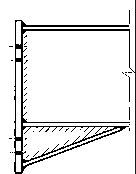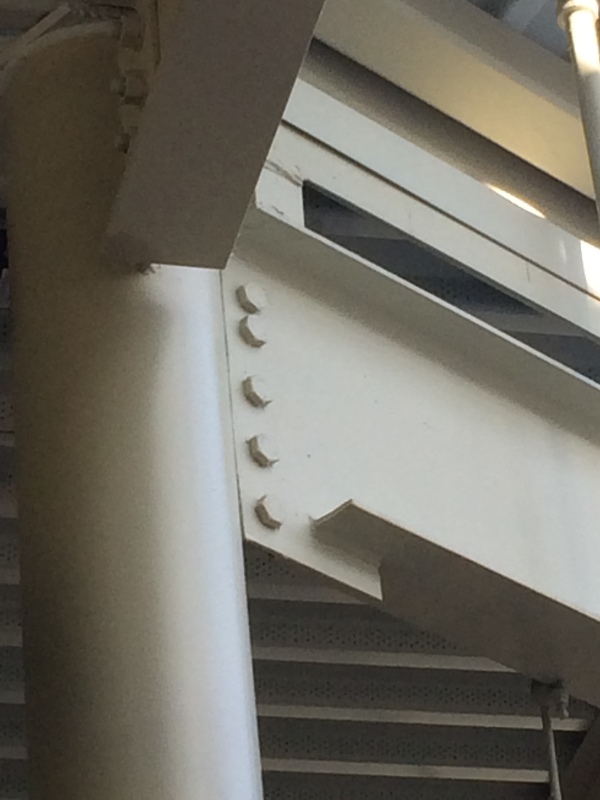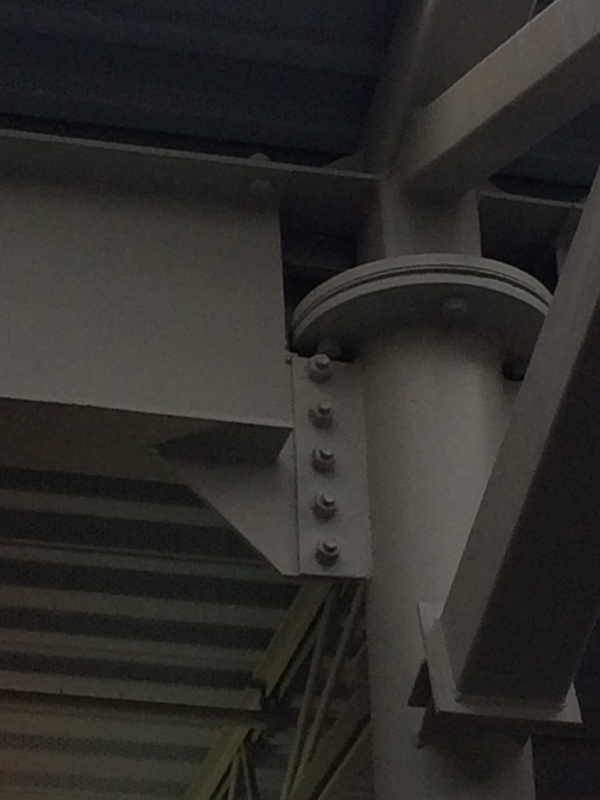All,
I have a situation with a beam design where I'm not able to obtain enough shear capacity from a full-depth bolted connection. I want add a stiffened seat to provide additional support strength as well as provide a margin of safety. We've used standard design methods for each connection from the SCM (14th Ed.).
I do have a concern about the shear engagement of the two connections. If the beam is first set on the seat, then the bolts may not be in full bearing. If the beam is first bolted with the seat either welded in the field or in the shop, then the seat may not be engaged without deformation of the bolt holes.
Another option would be to first install the beam by bolted connection and then, in the field, push the seat tight up against the bottom of the beam and weld it. This would allow the bolts to engage and the seat to be in full contact with the bottom flange of the beam.
Has anyone used this approach?
Comments? Opinions?
Thanks in advance.
I have a situation with a beam design where I'm not able to obtain enough shear capacity from a full-depth bolted connection. I want add a stiffened seat to provide additional support strength as well as provide a margin of safety. We've used standard design methods for each connection from the SCM (14th Ed.).
I do have a concern about the shear engagement of the two connections. If the beam is first set on the seat, then the bolts may not be in full bearing. If the beam is first bolted with the seat either welded in the field or in the shop, then the seat may not be engaged without deformation of the bolt holes.
Another option would be to first install the beam by bolted connection and then, in the field, push the seat tight up against the bottom of the beam and weld it. This would allow the bolts to engage and the seat to be in full contact with the bottom flange of the beam.
Has anyone used this approach?
Comments? Opinions?
Thanks in advance.



